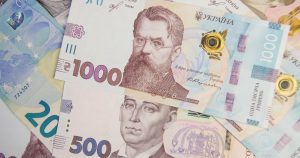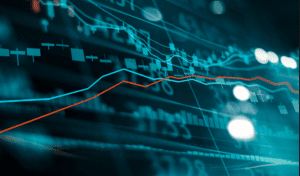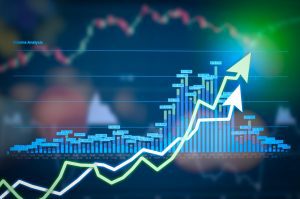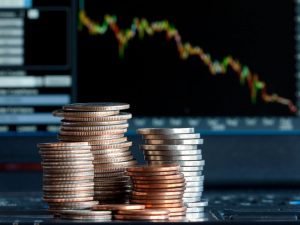
The fall of the Ukrainian economy in 2020 may amount to 5.5% of GDP with a further recovery of growth by 3.5-4% in the next two years, analysts at Deutsche Bank expect.
According to the materials of Emerging Markets Outlook 2021, experts admit that the next tranche of the International Monetary Fund (IMF) will be allocated to Ukraine in early 2021, which will pave the way for obtaining funding from other international partners.
At the same time, the central bank will leave the discount rate at 6% per annum, according to the review.

Ukraine has entered the crisis in better macroeconomic condition than in previous crises due to prudent macroeconomic management over the past several years, and activity in Ukraine, the largest economy in the subregion, is projected to shrink in 2020, by 5.5%, the World Bank has said.
The decline in GDP in January-August 2020 will amount to 5.8%, the Ministry of Economic Development, Trade and Agriculture of Ukraine expects in the review of economic activity in August.
The International Monetary Fund (IMF) has improved its assessment of the decline of Ukraine’s GDP in 2020 to 7.2% from 8.2% in the June forecast.
The National Bank of Ukraine (NBU) has said that the GDP forecast for 2020 has remained unchanged at 6% and the expectations regarding its growth next year were improved from 4% (in July forecast) to 4.2%, the NBU said on its website on Thursday.
The National Bank of Ukraine (NBU) has improved the assessment of the decline in the gross domestic product of Ukraine (GDP) to 6.2% in July-September 2020 from 7.4% (in July’s forecast), according to an inflation report posted on the regulator’s website on Thursday night.
The National Bank of Ukraine (NBU) predicts a deficit of the public administration sector in 2020 at 6.5%, in 2021 at 4% of GDP and in 2022 at 3% of GDP, according to the central bank’s inflation report posted on its website on Thursday night.
The Board of the National Bank of Ukraine (NBU) has decided to leave its key policy rate unchanged at 6%, according to a posting on the website of the central bank on Thursday.
The National Bank of Ukraine (NBU) has improved its inflation forecast for 2020 from 4.7% (in the July forecast) to 4.1%, while worsened it for the next year from 5.5% to 6.5%.
The volume of exports of goods in September amounted to $4.19 billion, which is 2.87% higher than in September 2019, but 0.77% less than in August, the State Customs Service has reported.
The deficit of Ukraine’s foreign trade in goods in January-August 2020 decreased 59.4% compared to January-August 2019, to $2.399 billion from $5.915 billion, the State Statistics Service reported on Thursday.
Consumer prices in Ukraine in September 2020 increased 0.5% after a decrease of 0.2% in August and 0.6% in July and an increase of 0.2% in June, 0.3% in May and 0.8% in April and March, the State Statistics Service reported on Friday.
The National Bank of Ukraine (NBU) has improved its inflation forecast for 2020 from 4.7% (in the July forecast) to 4.1%, while worsened it for the next year from 5.5% to 6.5%.
State budget revenues in September 2020 amounted to UAH 76 billion, which is 15.3% more than the planned figure and 11.5% more than last year’s level, according to the data of the State Treasury Service.
The total public debt of Ukraine in September 2020 decreased 2.6% in U.S. dollars, to $82.89 billion and increased by 0.32% in hryvnias, to UAH 2.345 trillion, according to data on the website of the Ministry of Finance.
The prices of industrial producers in Ukraine in September 2020 increased 1.7%, while in August the increase was 2.3%, in July 0.4%, and in June and May they decreased 2% and 0.6%, the State Statistics Service reported on Monday.

Fitch Ratings has affirmed Ukraine’s Long-Term Foreign-Currency (LTFC) Issuer Default Rating (IDR) at ‘B’ with a stable outlook, the rating agency said on its website.
The decision to partially buy back GDP warrants issued during the restructuring of Ukraine’s external debt in 2015 is aimed at reducing payments from the state budget, which next year should amount to $40 million, and for the entire circulation period of these securities may exceed $22 billion by 2040, Finance Minister Serhiy Marchenko has said.
The fall in Ukraine’s GDP in January-July 2020 slowed down to 6.2% compared to 6.5% in the first half of this year, according to the economic activity review for the seven months of 2020, published by the Ministry of Economic Development, Trade and Agriculture.
S&P Global Ratings affirmed its global scale long-term foreign and local currency sovereign ratings on Ukraine at ‘B’ and its Ukraine national scale ratings at ‘uaA’.
The decline in the gross domestic product (GDP) of Ukraine in 2020 will be 6%, but next year the economy will return to growth: in 2021 – by 4%, in 2022-2023 – by 3% annually, according to a forecast contained in the report of the S&P Global Ratings (S&P), which affirmed Ukraine’s ratings at ‘B/B.’
The task of financing the deficit of the state budget of Ukraine for 2021 of UAH 270 billion, or 6% of GDP, is feasible and can be accomplished without using the scheme for banks to purchase government domestic loan bonds at non-market rates thanks to refinancing loans from the National Bank, Finance Minister Serhiy Marchenko has said.
Dragon Capital Investment Company has improved its forecast for the fall of the Ukrainian economy in 2020 from 7.2% of GDP to 5.5% of GDP, head of the company Tomas Fiala has said.
Ukraine’s GDP is forecast to contract by 5.5% in 2020, followed by a recovery of 3.0% in 2021, according to the September Regional Economic Prospects of the European Bank for Reconstruction and Development (EBRD) published on Thursday.
The deficit of Ukraine’s foreign trade in goods in January-August 2020 halved compared with January-August 2019, to $2.43 billion from $4.96 billion, according to data from the State Customs Service presented on Tuesday. According to its statistics, the export of goods from Ukraine over the specified period compared to the same period in 2019 decreased 6.6%, to $ 30.91 billion, imports – 12.4%, to $33.34 billion.
Consumer prices in Ukraine in August 2020 decreased by 0.2% after falling by 0.6% in July and growing by 0.2% in June, 0.3% in May and 0.8% in April and March, the State Statistics Service has reported.
The draft state budget for 2021 provides for an increase in receipts by 9.4%, expenditure – by 5.1%, Minister of Finance of Ukraine Serhiy Marchenko has said.
The loan portfolio of Ukrainian banks in January-August 2020 expanded by 3.8% to UAH 1.14 trillion, including the volume of non-performing loans (NPL) – by 3.2%, to UAH 547.71 billion, according to a report posted on the website of the National Bank of Ukraine (NBU).
The retail trade turnover in Ukraine in August 2020 increased by 8.7% compared to the same month in 2019 at comparable prices, while in the previous month the growth was 8.5%, the State Statistics Service has said.
According to the report, in August compared to July 2020 retail turnover increased by 2.2%.

The gross domestic product (GDP) of Ukraine, according to the Ministry of Economy, in the first half of 2020 decreased by 6.5% compared to the same period in 2019, in particular in the second quarter the decline was 11%, which is less than expected earlier (14%).
The drop in Ukraine’s GDP in 2020 will amount to 6% instead of 4.2% expected in April this year, such a consensus forecast on the impact of СOVID-19 on the economy and the society was announced by the Ministry of Economic Development, Trade and Agriculture.
The fall in the gross domestic product (GDP) of Ukraine in the second quarter of 2020 amounted to 11.4% compared to the same period in 2019 against 1.3% in the first quarter, the State Statistics Service has reported in its preliminary estimate.
The Ministry of Economic Development, Trade and Agriculture of Ukraine improved the inflation forecast for 2020 to 5.9% December over December, while in the macroeconomic forecast approved in March, this indicator was at the level of 11.6%, according to the forecast of the socio-economic development of Ukraine for 2021-2023.
Real wages in Ukraine in July 2020 compared to July 2019 increased by 5.1%, and from June 2020 by 2.6%, the State Statistics Service has said.
The Ukrainian Finance Ministry has redeemed the second series of eurobonds issued in the course of restructuring in 2015 and maturing this year worth $1.69 billion and paid some $400 million in interest payments on eurobonds maturing in 2020-2027.
The deficit of Ukraine’s foreign trade in goods in January-August 2020 halved compared with January-August 2019, to $2.43 billion from $4.96 billion, according to data from the State Customs Service presented.
Consumer prices in Ukraine in July 2020 decreased by 0.6% after growing by 0.2% in June, 0.3% in May and 0.8% in April and March, the State Statistics Service has reported.
State budget revenues in July 2020 amounted to UAH 68.92 billion, which is 8% more than the target, but 10.8% behind the last year’s level, according to data from the State Treasury Service.
Ukraine’s international reserves in July 2020, according to preliminary data, increased by 1%, to $28.802 billion, according to the website of the National Bank of Ukraine (NBU).
The debt of the population of Ukraine for housing and utilities services in July 2020 decreased by 3.6% compared to June and amounted to UAH 50.5 billion (excluding electricity).
The prices of industrial producers in Ukraine in July 2020 increased by 0.4%, while in June they decreased by 2%, in May by 0.6% with an increase in April by 0.1%, in March by 1.8%, February by 0.1% and January by 2.5%, the State Statistics Service has reported.
Since the beginning of the new 2020/2021 marketing year (MY, July-June) and as of August 21, Ukraine had exported 5.62 million tonnes of grains and legumes, which is 1.22 million tonnes less (due to corn) than on this date in the past MY.
Prices for construction and installation works in Ukraine in January-June 2020 increased by 1.3% compared to January-June 2019, the State Statistics Service of Ukraine reports.
The turnover of retail trade in Ukraine in July 2020 compared to the same month in 2019 in comparable prices increased by 8.5%, while in the previous month the growth was 1.4%, the State Statistics Service has said.

Prime Minister of Ukraine Denys Shmyhal noted that the Ukrainian economy began to recover in the third quarter.
“In the third quarter, the Ukrainian economy began to recover. In addition to the recovery in consumption, this was positively affected by the harvest, which was actually postponed from the second quarter to the third due to weather conditions. Also, according to forecasts of the Ministry of Economy, in the next three years, GDP will grow on average more than 4% annually,” wrote Shmyhal on his official Facebook page on Saturday night.
The premier noted that the situation with the coronavirus is not only a serious blow to the medical systems of different countries.
“This is also one of the largest economic recessions in the past 70 years. Almost all world economies showed a rapid decline in GDP in the second quarter,” Shmyhal said.

Minister of Economic Development, Trade and Agriculture of Ukraine Ihor Petrashko advocates for reducing the number of ministries, while noting that the discussion on dividing his ministry into agrarian and economic departments continues.
“Personally, I am not a supporter of constant changes. If there is a need for them, it is needed to make them gradually. There are periods of bureaucratic instability within some similar changes. However, again, there is a statement by the president and a discussion in parliament. What format will be agreed upon? The main thing is efficiency and results,” he told Interfax-Ukraine.”I support reducing the number of ministries,” the minister said.
According to him, the discussion regarding the post of deputy prime minister for industry or a separate body in this area has also not been completed.
“There is still the discussion about new formats and posts, there are different statements. It is important to find the right format in this case,” Petrashko said.